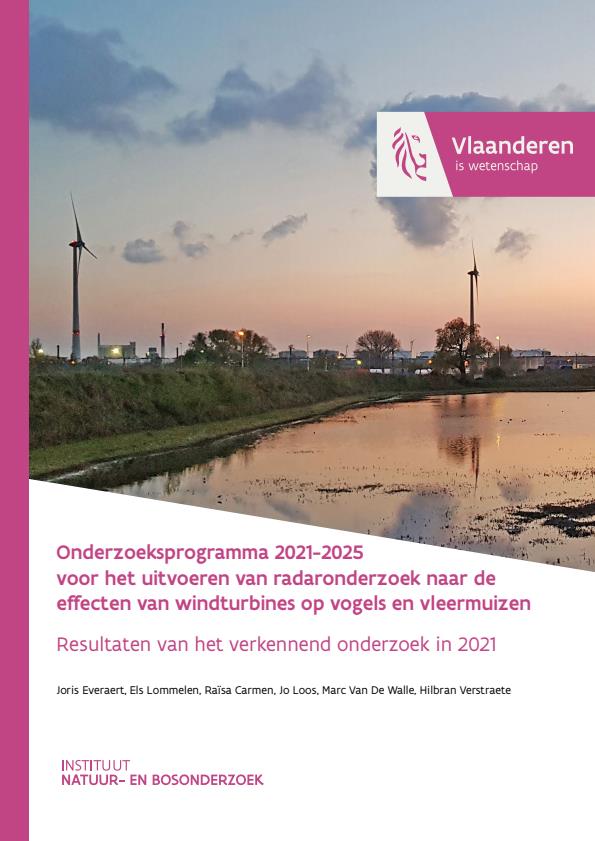Onderzoeksprogramma 2021-2025 voor het uitvoeren van radaronderzoek naar de effecten van windturbines op vogels en vleermuizen. Resultaten van het verkennend onderzoek in 2021
The radar used (ROBIN 3D Max) provides 3D information of bird movements, depending on the bird size up to several kilometres away. The detected flight paths (bird tracks) enter a database, along with an automatic classification of the size of the detected object. This can include insects, small, medium and large birds, to groups of birds. The radar operates 24/7, resulting in millions of bird tracks by 2021.
To test and increase data quality, we conducted validation experiments at several locations in the focus area in 2021. These validations show that the radar system used provided some points of interest is able to collect useful data on bird flight movements and the potential effects of wind turbines even in spatially difficult environments. The radar's automatic bird classification is complex: preliminary conclusions indicate that the radar often classifies individual birds one class too small. Based on more validations, this can be optimised.
In the coming years, a more detailed analysis is planned to determine avoidance behaviour and collision risk at wind turbines. There, we will also include meteorological parameters, and data from the operation and position of the blades.
In late summer 2021, the radar also detected foraging bats at relatively high altitudes (around 50 metres and above) above some nature areas in the port area.
Details
| Number of pages | 105 |
|---|---|
| Type | Reports of Research Institute for Nature and Forest |
| Category | Research |
| Language | Dutch |
Bibtex
@misc{11b09bbc-ee59-46be-9761-e8d58cf86c77,
title = "Onderzoeksprogramma 2021-2025 voor het uitvoeren van radaronderzoek naar de effecten van windturbines op vogels en vleermuizen",
abstract = "With innovative radar research, the Flemish Ecology Energy Environment Enterprise (VLEEMO NV) wants to get a better picture in and around the port of Antwerp of the possible effects of existing and still-planned wind turbines on birds and bats.
The radar used (ROBIN 3D Max) provides 3D information of bird movements, depending on the bird size up to several kilometres away. The detected flight paths (bird tracks) enter a database, along with an automatic classification of the size of the detected object. This can include insects, small, medium and large birds, to groups of birds. The radar operates 24/7, resulting in millions of bird tracks by 2021.
To test and increase data quality, we conducted validation experiments at several locations in the focus area in 2021. These validations show that the radar system used provided some points of interest is able to collect useful data on bird flight movements and the potential effects of wind turbines even in spatially difficult environments. The radar's automatic bird classification is complex: preliminary conclusions indicate that the radar often classifies individual birds one class too small. Based on more validations, this can be optimised.
In the coming years, a more detailed analysis is planned to determine avoidance behaviour and collision risk at wind turbines. There, we will also include meteorological parameters, and data from the operation and position of the blades.
In late summer 2021, the radar also detected foraging bats at relatively high altitudes (around 50 metres and above) above some nature areas in the port area.",
author = "Joris Everaert and Els Lommelen and Raïsa Carmen and Jo Loos and Marc Van De Walle and Hilbran Verstraete",
year = "2022",
month = jun,
day = "17",
doi = "https://doi.org/10.21436/inbor.73800966",
language = "English",
publisher = "Instituut voor Natuur- en Bosonderzoek",
address = "Belgium,
type = "Other"
}

